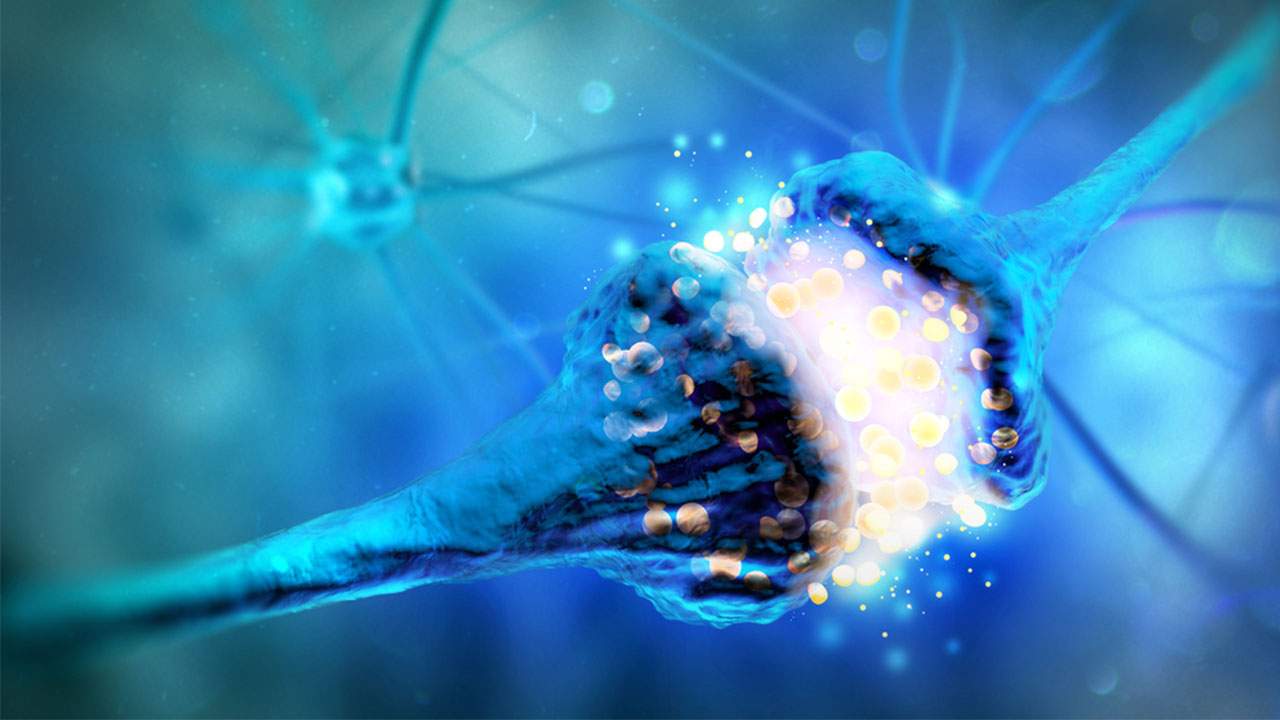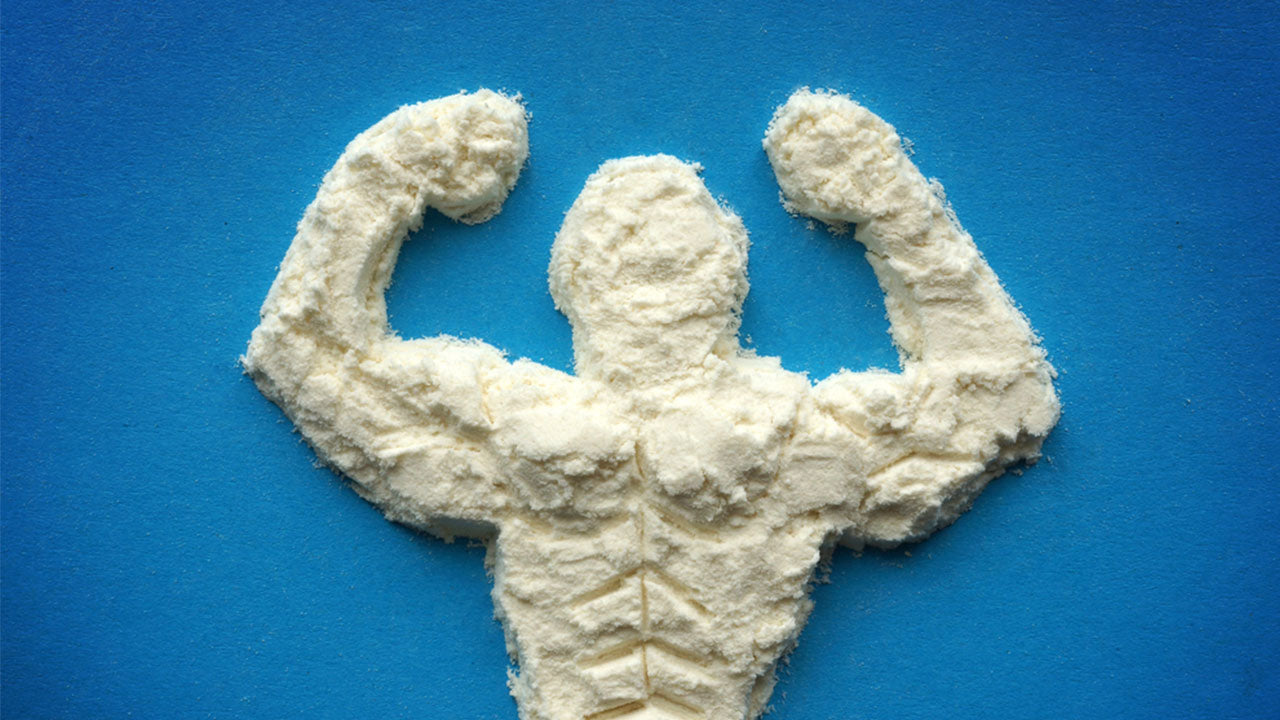How Your Brain Communicates: Brain Neurotransmitters and Amino Acids
 By: by Amino Science
By: by Amino Science

Within the brain and spinal cord that make up the central nervous system are approximately 86 to 100 billion nerve cells known as neurons. And each of these brain cells communicates with the help of chemical messengers called neurotransmitters. But there’s much more to the story than this. So if you’ve ever wondered how your brain communicates, come with us as we journey through the realm of brain neurotransmitters and the amino acids that fuel them.
How Do Neurons Communicate?
Although multiple branches can occur in more complex pathways, in its simplest form, a neuron has two ends: an axon and a dendrite. A neuron communicates with other neurons by sending neurotransmitters from its axon, or nerve fiber, to the dendrite of another neuron. However, in order for this to happen, the neurotransmitter must cross the synapse—the space between the axon and the dendrite.
Neurotransmitters are stored in the axon terminal, or presynaptic neuron, in packages called synaptic vesicles, which release neurotransmitters when an appropriate electrical signal, or action potential, triggers the axon terminal. Once released, these neurotransmitters then cross the synapse at what’s called the synaptic cleft to bind to the receptors on the dendrite of another neuron—the postsynaptic neuron.
When enough neurotransmitters are bound to the receiving neuron’s receptors, a signal is sent down the neuron, and the message continues on. However, if there aren’t enough neurotransmitters to trigger the receptors, then the message stops.
To better understand what we’re talking about here, let’s use the analogy of electricity: if you increase the voltage, more electricity can move through a wire. Neurotransmitters act like electricity—when given enough “juice,” functions are turned on and operate smoothly. However, if the voltage isn’t sufficient, the signal won’t be transmitted.
In either case, once the neurotransmitter is released from the receptor, it’s either taken back up into the synaptic vesicle of the axon terminal by a neurotransmitter reuptake pump (transporter) or it’s destroyed by enzymes present in the synapse. If a neurotransmitter is taken back up into the presynaptic neuron via the reuptake transporter, it’s protected and can be used again. However, if the transporter is blocked—which is how certain medications work—the neurotransmitter is eventually destroyed and cleared from the system by enzymes.
Types of Brain Neurotransmitters
When talking about neurotransmitters, it’s helpful to note that most are classified as one of two types: inhibitory or excitatory. Inhibitory neurotransmitters slow down the flow of information by reducing the activity of neurons, while excitatory neurotransmitters generally increase the flow of information. In order for there to be smooth and coordinated bodily functions, proper brain signaling requires a balance between inhibitory and excitatory neurotransmitters.
There are over 100 different types of neurotransmitters to help ensure the body runs smoothly, but only 10 are responsible for the vast majority of the workload in the human brain. And these 10 are largely dependent on amino acids.
This is because our cells, muscles, and tissues are made up of amino acids, which build the proteins that are essential to virtually every biological process in the body. These simple compounds also play an important role in brain health, as evidenced by the synergistic relationship between brain neurotransmitters and amino acids.
Some amino acids act directly as neurotransmitters, and others serve as precursors, or “building blocks,” of molecules that act as neurotransmitters. And some of these amino acids and neurotransmitters act as signals in other parts of the body.
Let’s get to know these 10 major neurotransmitters and their functions in the brain and body. But before we begin, it might be helpful to know exactly what these 10 neurotransmitters are:
- Dopamine
- Serotonin
- Glycine
- Gamma-aminobutyric acid (GABA)
- Glutamate (glutamic acid)
- Epinephrine and norepinephrine
- Endorphins
- Acetylcholine
- Aspartate (aspartic acid)
- Histamine

1. Dopamine
Dopamine is both a hormone and a neurotransmitter that’s most commonly associated with the brain’s pleasure and reward system, though it also plays a role in motor control. In fact, the symptoms of Parkinson’s disease are related to low dopamine levels in the brain.
The dopamine that acts as a neurotransmitter originates in two adjacent regions of the brain: the substantia nigra and the ventral tegmental area (VTA). The dopamine produced in these areas is relayed throughout the brain, with dopamine from the substantia nigra helping to initiate movement and speech and dopamine from the VTA playing a role in the pleasure-reward system.
Dopamine from the VTA is released every time an action warrants a reward. Although this signaling can sometimes be tricked into fueling negative behaviors, like drug addiction or gambling, it generally works to reward positive behaviors, like eating and drinking water. And because rewards make us feel good, dopamine also boosts mood and increases focus, thereby helping to motivate us to continue the behavior that ensures a reward.
2. Serotonin
Sometimes referred to as the happy chemical, serotonin is a neurotransmitter well known for regulating mood. In fact, serotonin’s role in mood regulation spawned an entire class of medications called selective serotonin reuptake inhibitors, or SSRIs, which raise serotonin levels in the brain by blocking its reabsorption. SSRIs are widely used in the treatment of both depression and obsessive-compulsive disorder.
However, it’s estimated that 90% of the serotonin in the body is actually made in the digestive tract, with low levels being linked to conditions as diverse as irritable bowel syndrome, cardiovascular disease, and osteoporosis.
Beyond its role in regulating mood, serotonin also plays a part in appetite and sleep as well as physiological and cognitive functions, including vasoconstriction, vasodilation, memory, and learning.
3. Glycine
Due to a side chain—the shorter chain of atoms attached to the main chain, or backbone, of the molecule—consisting of only a single hydrogen atom, glycine is considered a small molecule and the simplest of all the amino acids. However, it plays an important role in a number of functions, including sleep, memory, immune health, appetite, and digestion, and even helps elevate serotonin levels.
Glycine is also one of the few brain chemicals to act as an inhibitory and excitatory neurotransmitter. Moreover, it’s the most common inhibitory neurotransmitter in the nervous system. In its inhibitory role, it participates in the processing of motor and sensory information that permits movement, vision, and audition, while in its excitatory role, it heightens the action of glutamate at N-methyl-D-aspartate (NMDA) receptors.
4. Gamma-aminobutyric acid (GABA)
GABA and glycine have much in common, as most inhibitory neurons in the brain and spinal cord use one or the other as a neurotransmitter. And as the main inhibitory neurotransmitter of the central nervous system, GABA plays a crucial role in reducing the activity of neurons. This, in turn, leads to increased relaxation, reduced stress, greater calm, decreased pain, and improved sleep and concentration.
GABA is also involved in the immune and endocrine systems as well as appetite, metabolism, motor control, and vision. And like glycine, it plays a role in the digestive tract as well.
5. Glutamate (Glutamic Acid)
Glutamate is in essence the mirror image of GABA, as it’s both the most abundant excitatory neurotransmitter in the nervous system and a precursor of GABA. Glutamate is also important for both learning and memory via its action at NMDA receptors, which are necessary for both synaptic plasticity and survival of neurons.
However, there’s also evidence that the balance of glutamate must be tightly maintained, as high levels of activity of the NMDA receptors are associated with excitotoxicity and cell death, both of which have been implicated in the development of neurodegenerative disorders like Alzheimer’s disease.
6. Epinephrine and Norepinephrine
Along with dopamine, epinephrine and norepinephrine make up the group of neurotransmitters known as catecholamines. As alluded to earlier, these chemicals can function as either hormones or neurotransmitters. While the amount of catecholamines that exists in the brain is low compared with glutamate and GABA, these chemicals play a significant part in central nervous system regulation. For example, they help prevent memory loss by enhancing formation and retrieval of memory and focusing attention.
However, the main role of epinephrine and norepinephrine is preparing the body for action during times of stress or danger via what’s known as the fight-or-flight response. During a fight-or-flight situation, these substances increase breathing and heart rate, blood pressure, muscle strength, and alertness; trigger the release of glucose; cause vasoconstriction of blood vessels; decrease the amount of blood going to the intestines; and increase blood flow to the skeletal muscles.
7. Endorphins
If you’re familiar with the term “runner’s high,” you’ve got a good idea of what endorphins are. They’re the neurotransmitters that inhibit the transmission of pain signals and promote feelings of euphoria. Endorphins play a role in mental disorders such as autism and depression, states of pleasure, and—as just mentioned—exercise. Like the catecholamines, endorphins can also act as either neurotransmitters or hormones.
8. Acetylcholine
Acetylcholine acts as an excitatory neurotransmitter in the central and peripheral nervous system. It triggers muscle contraction, stimulates the excretion of certain hormones, and is involved in wakefulness, attentiveness, short-term memory, learning, anger, aggression, sexuality, and thirst. Like glutamate, acetylcholine also appears to play a role in Alzheimer’s disease. However, unlike glutamate, it’s actually low levels of acetylcholine that seem to be associated with the disease.
9. Aspartate (Aspartic Acid)
Aspartate is closely related to glutamate and, like glutamate, is present in large amounts in the central nervous system. However, experts continue to disagree regarding whether aspartate performs the same functions as glutamate. In fact, while it’s known aspartate plays an important role in hormone and energy production, some researchers are continuing to study the substance to determine whether it’s truly an excitatory neurotransmitter.
10. Histamine
Histamine is an excitatory neurotransmitter that’s involved in both wakefulness and arousal. It’s also been suggested to act as a regulator of “whole brain” activity. In addition, histamine plays a part in the sleep-wake cycle, pituitary hormone secretion, appetite suppression, cognitive functions, pain, and antidiuretic hormone (vasopressin) release. It also appears to play a role in neurodegenerative diseases, such as Alzheimer’s disease, multiple sclerosis, and epilepsy.
If you're interested in supplementing with these neurotransmitters to help give a helping hand to brain communication, then know this: amino acids work in synergy with one another, and when levels of one rise, levels of others can drop, which can have adverse side effects, like muscle loss and mood imbalance. For this reason, it is important to supplement with these amino acids either as part of or alongside a balanced concentration of all the essential amino acids. You can find complete amino acid supplements here.

Up to 25% off Amino
Shop NowTAGS: knowledge
Join the Community
Comments (0)
Most Craveable Recipes




 833-264-6620
833-264-6620



















